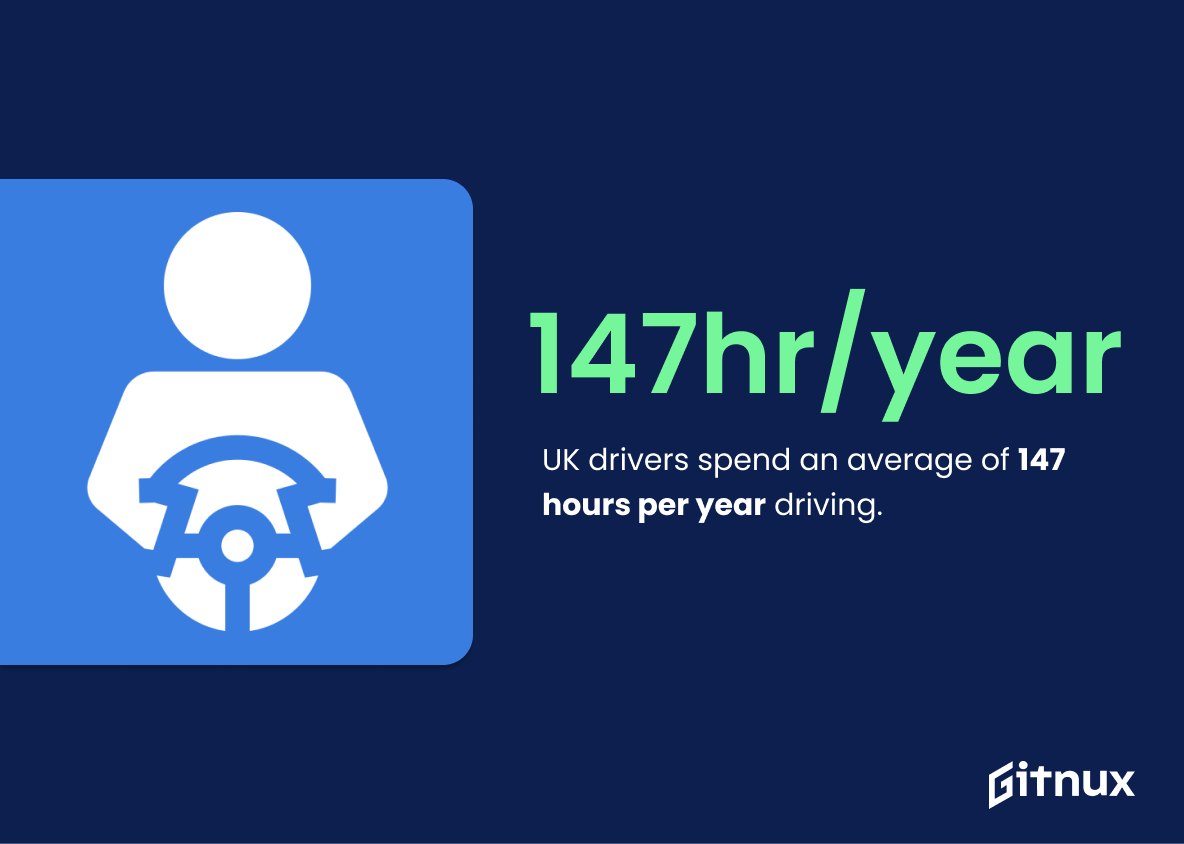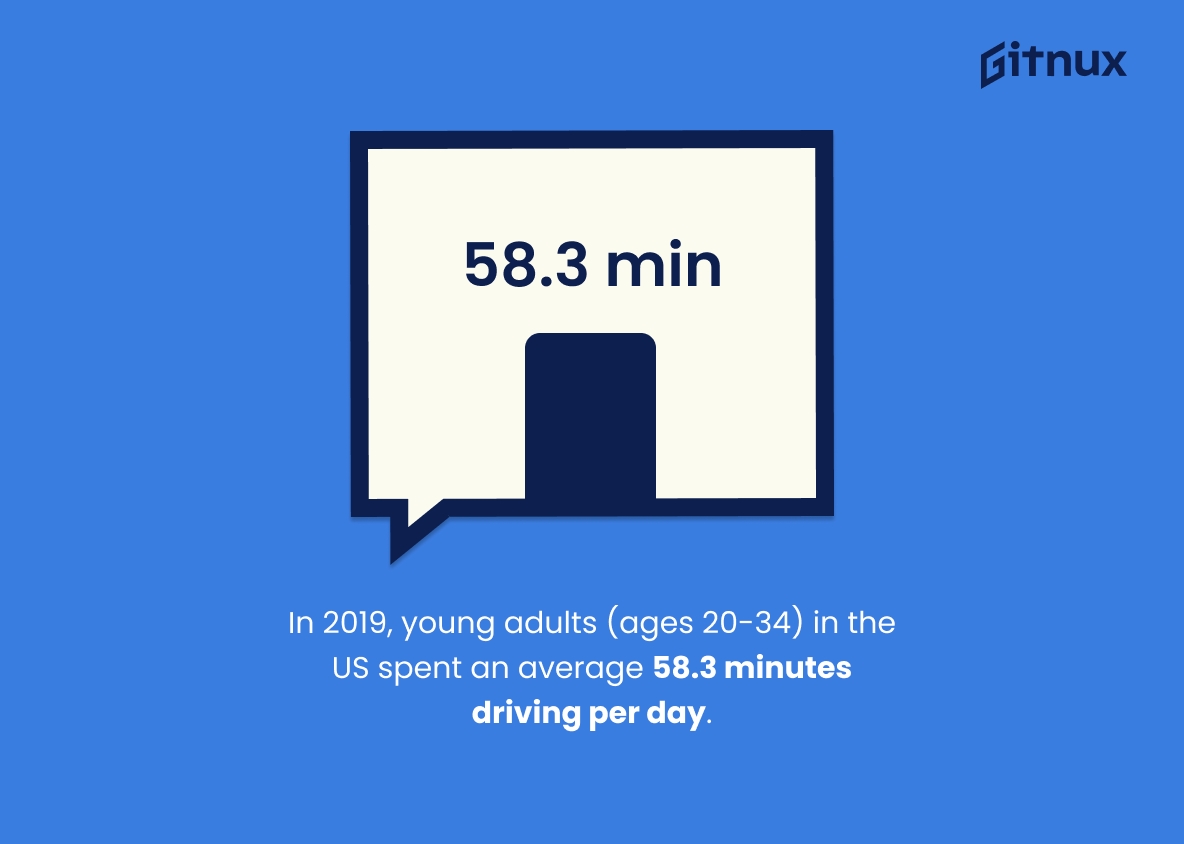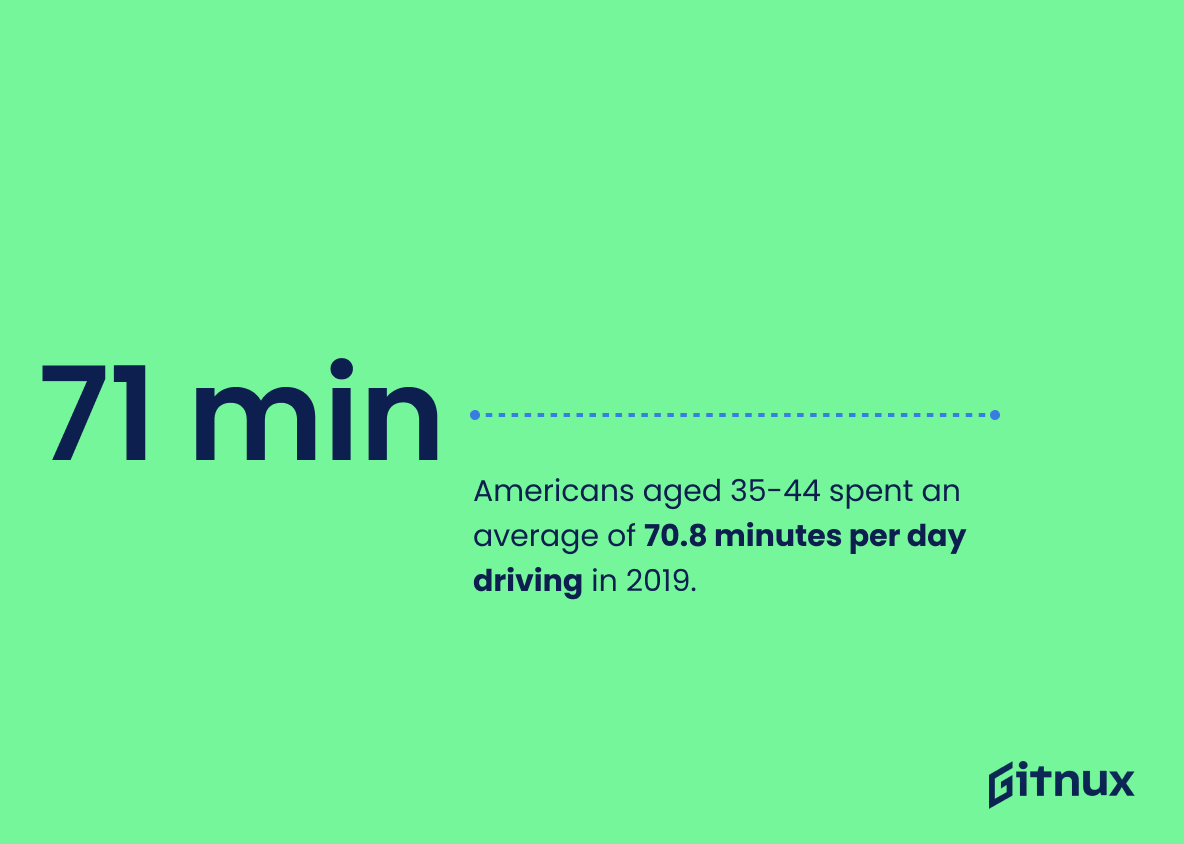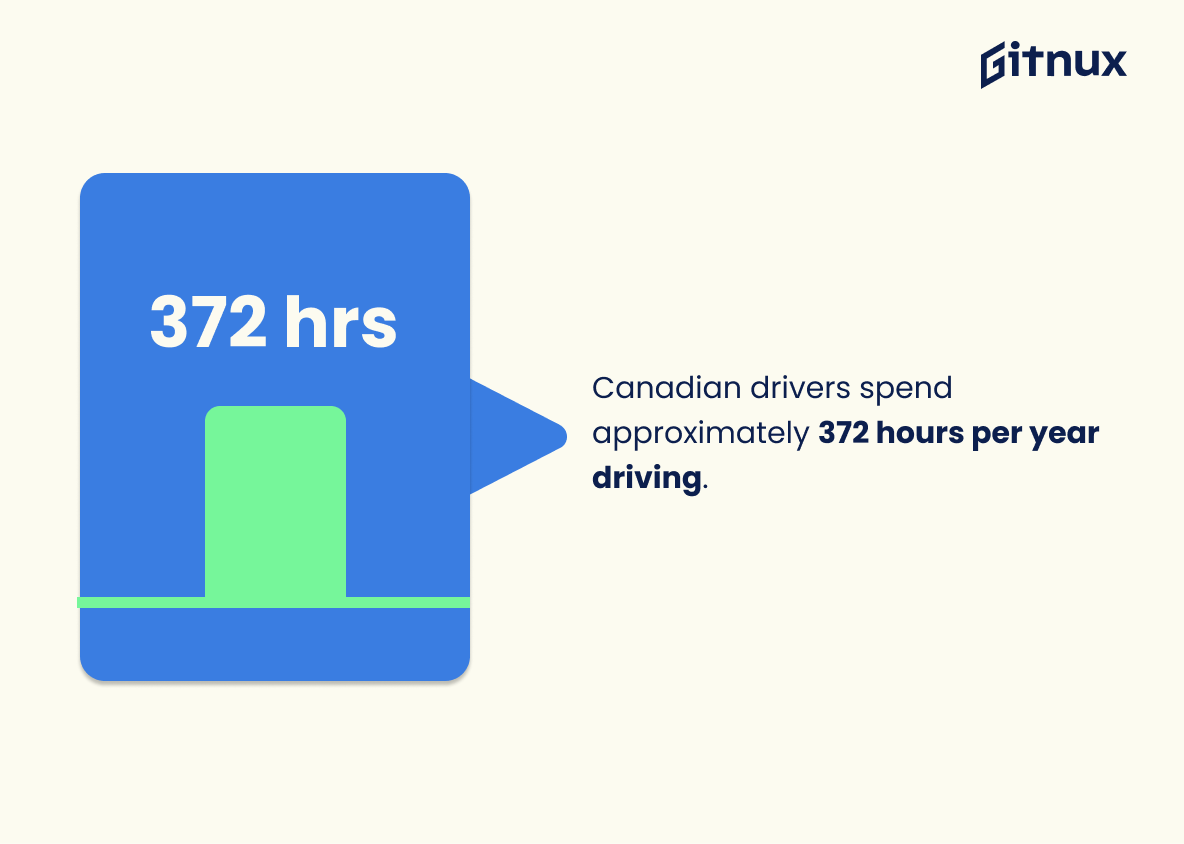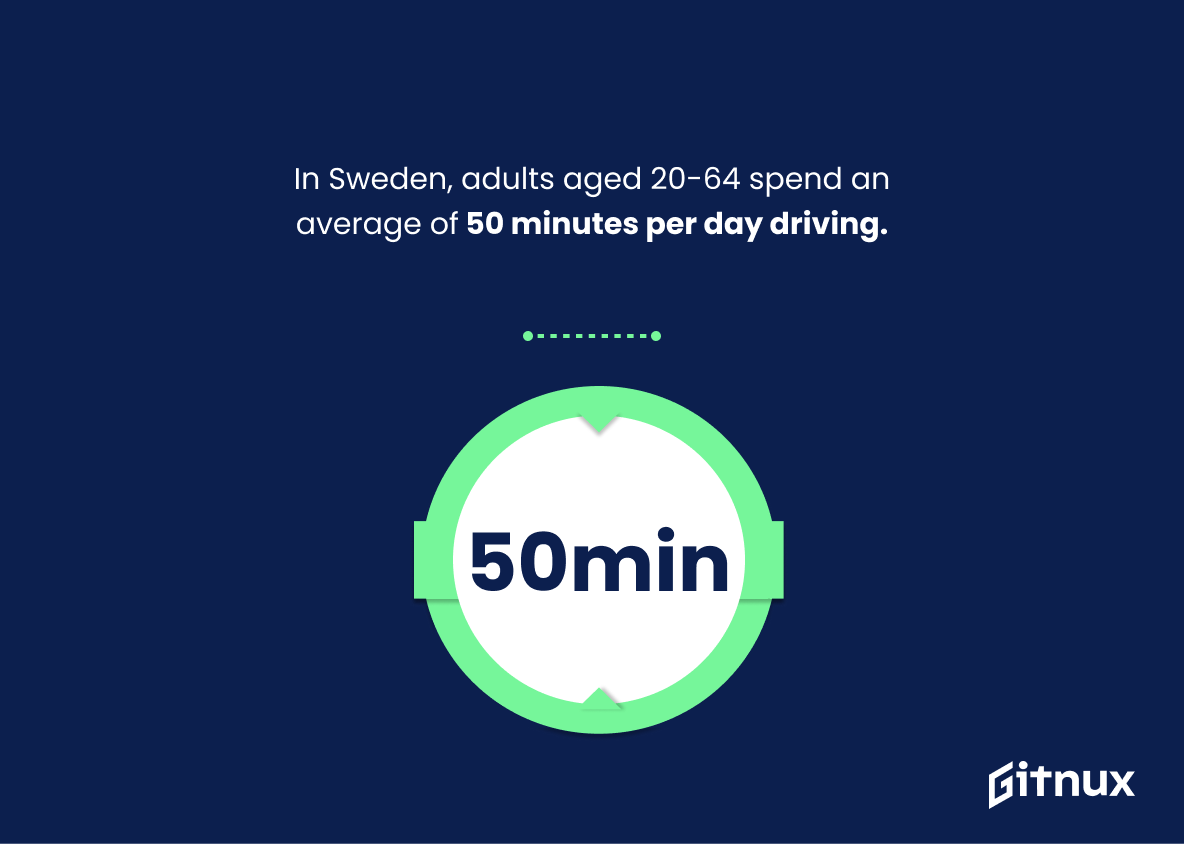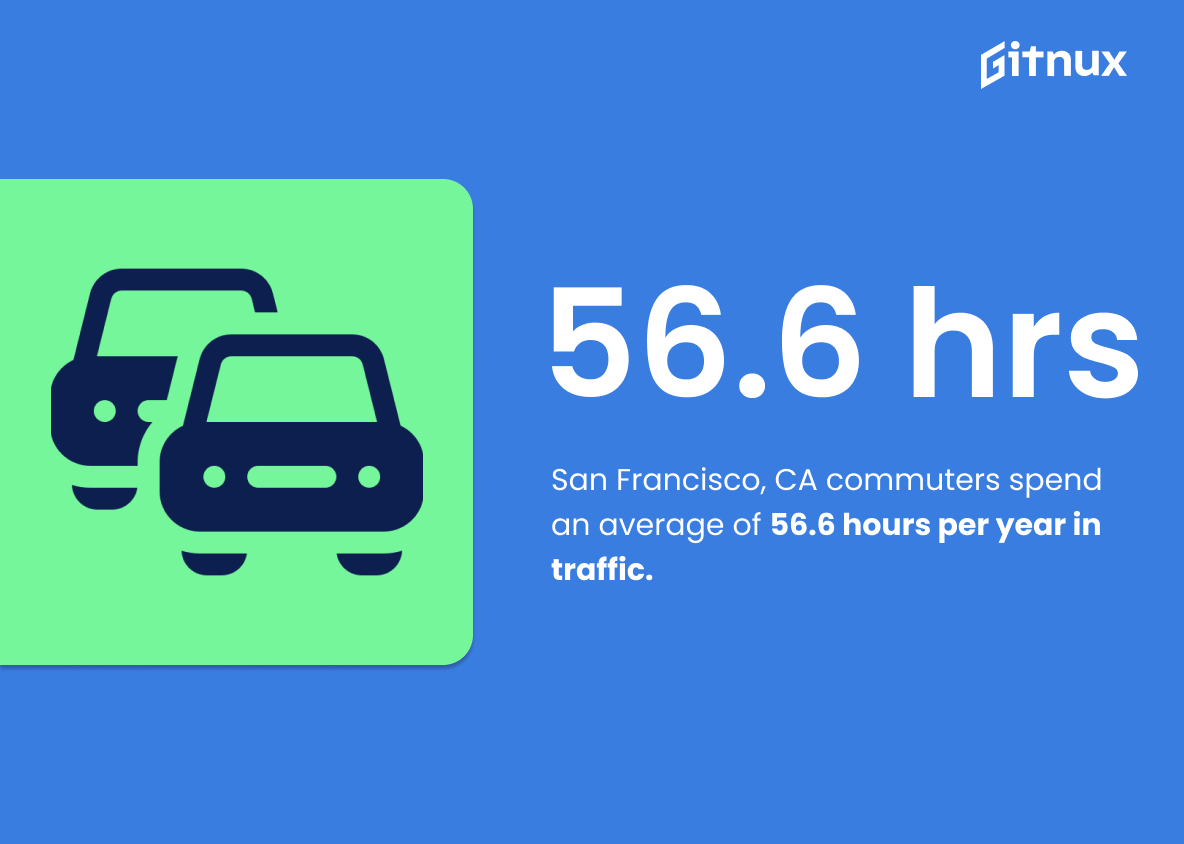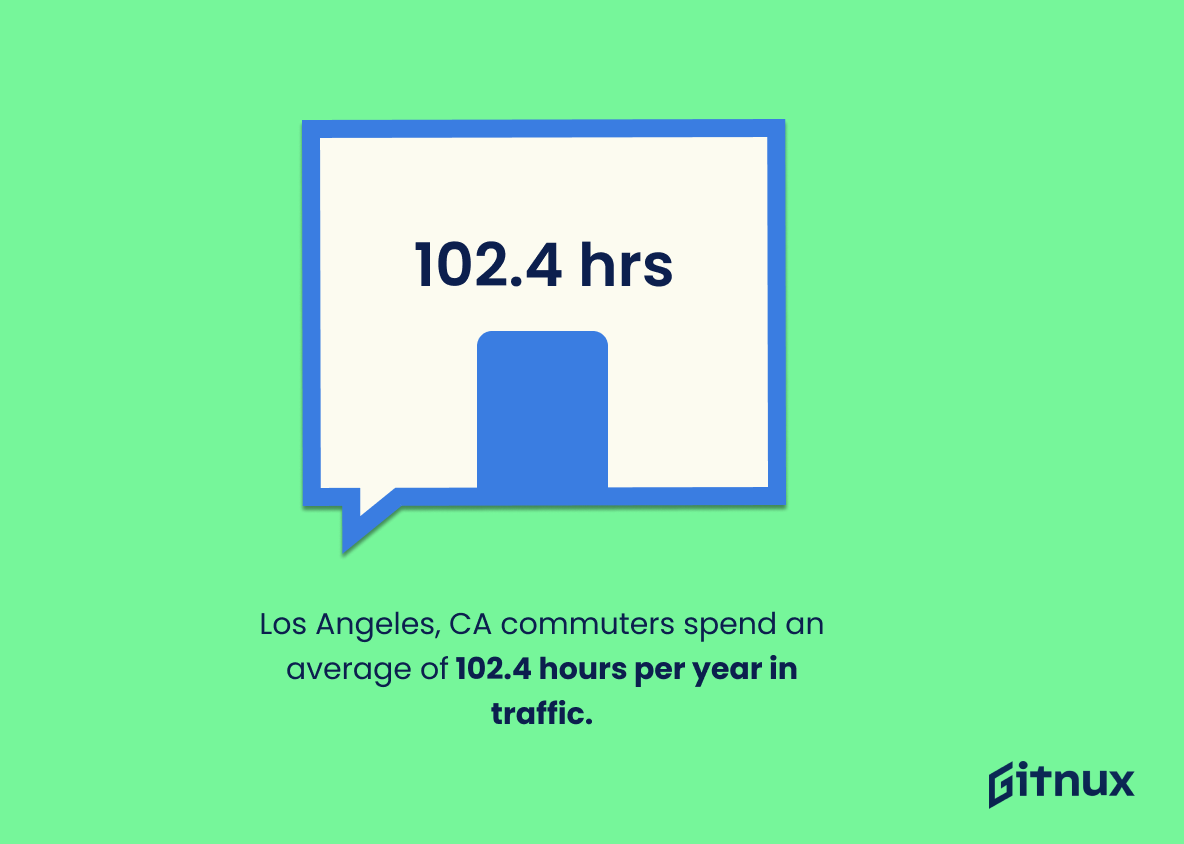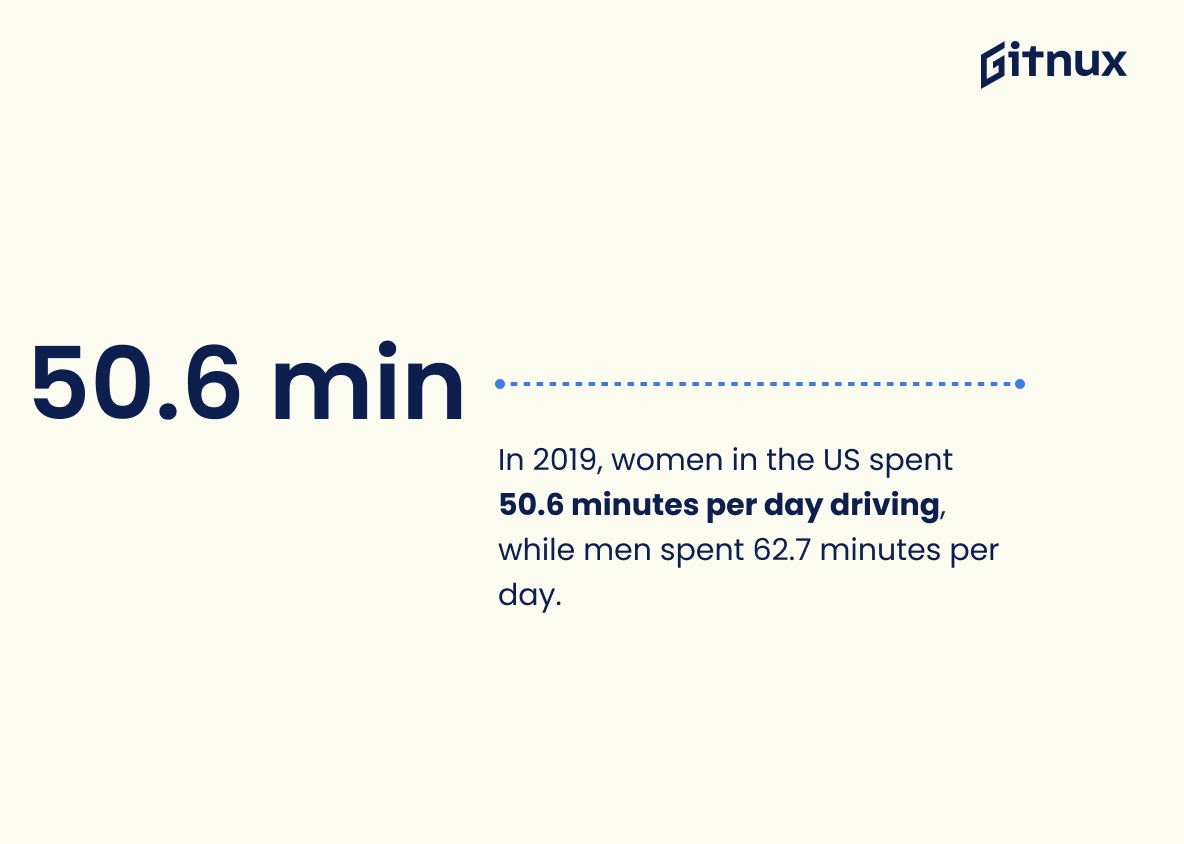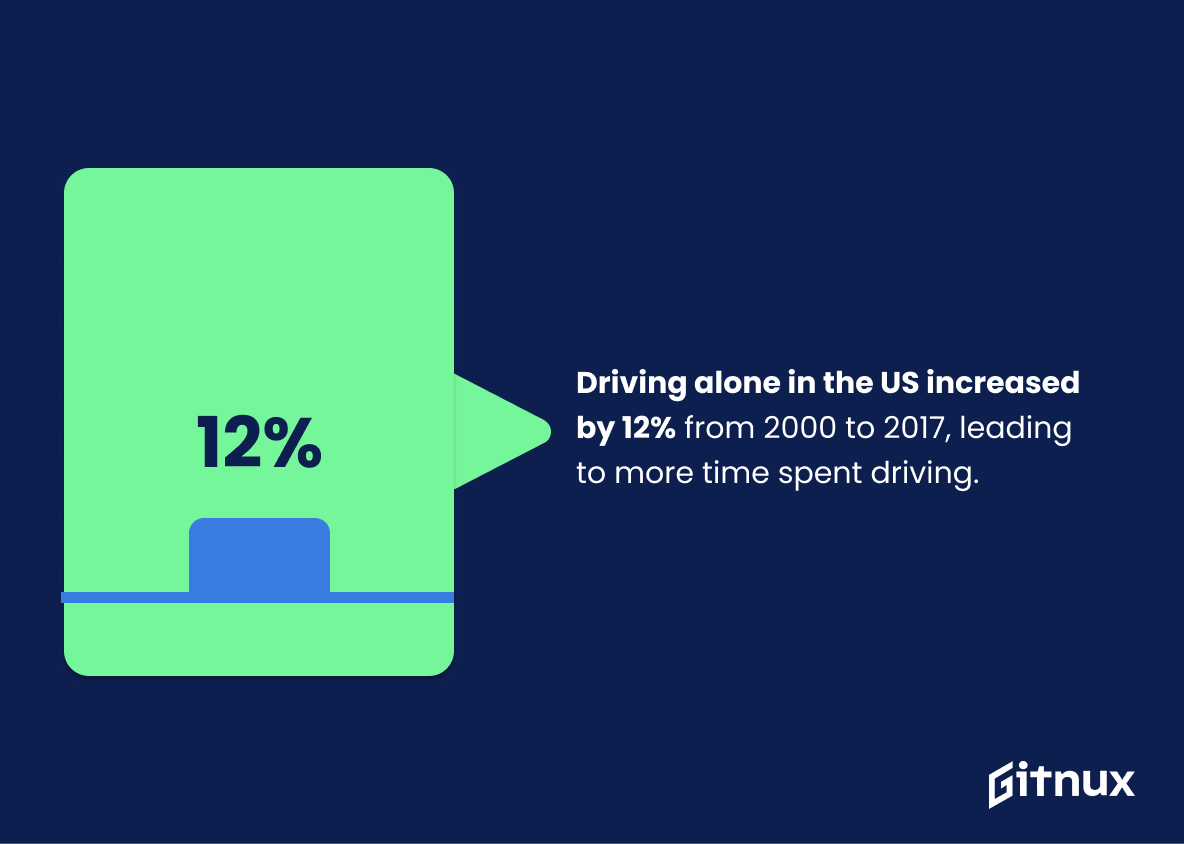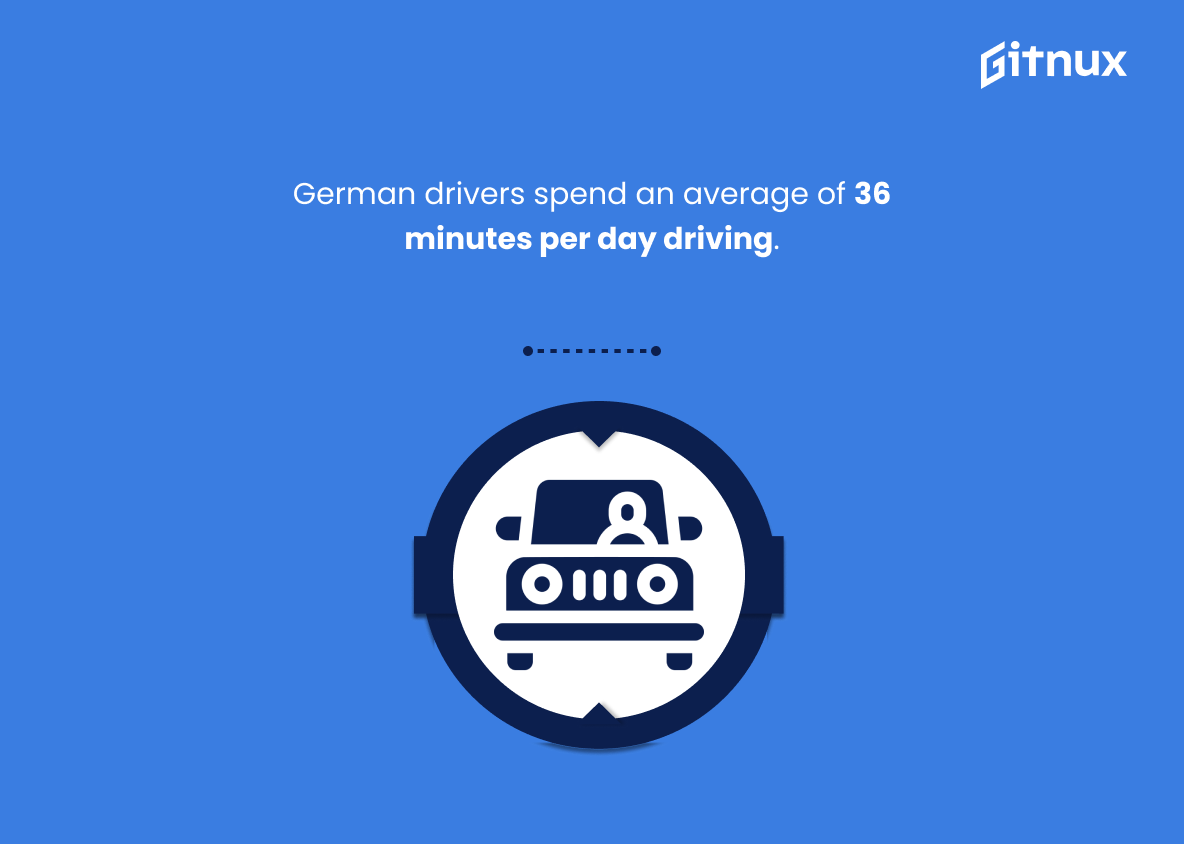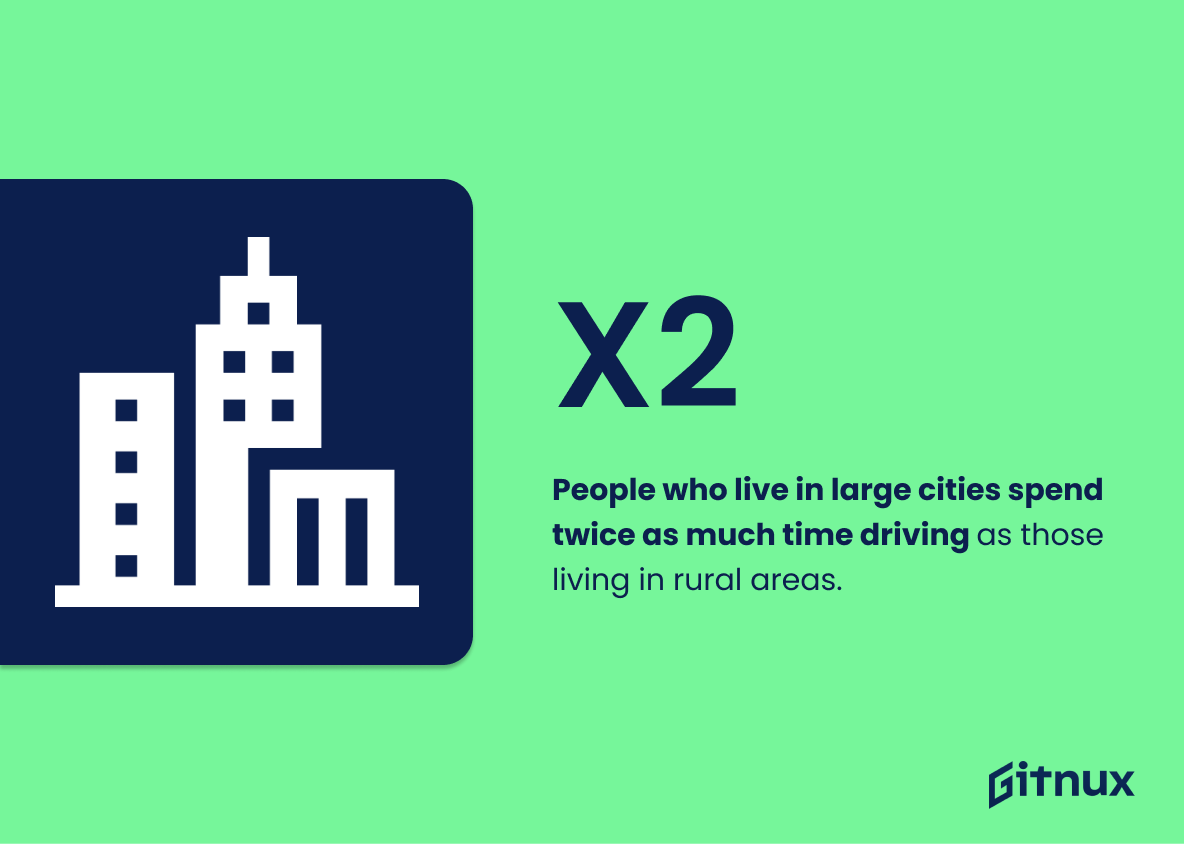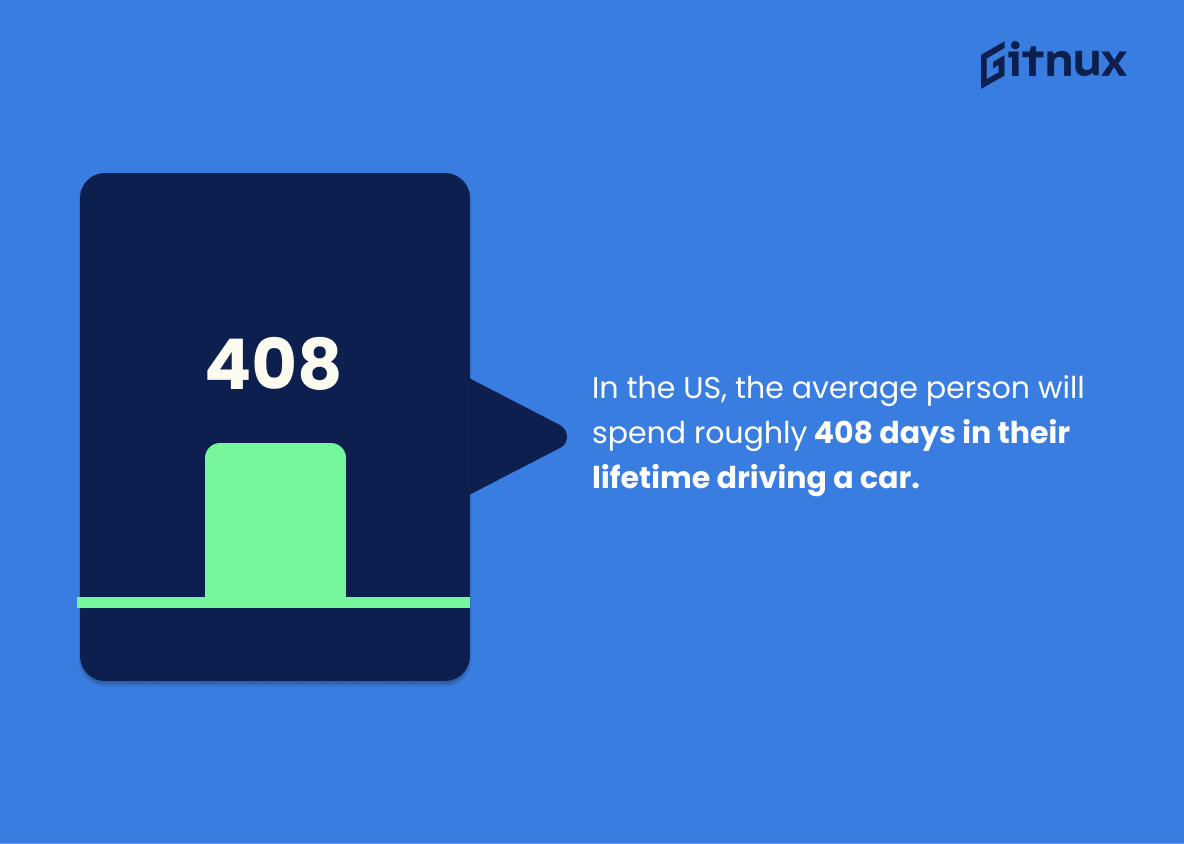Have you ever wondered how much time people around the world spend driving? From Americans spending 101 minutes per day to Canadians spending 372 hours a year, it’s clear that many of us are behind the wheel for significant amounts of time. In this blog post, we’ll explore 20 statistics about time spent driving from various countries and regions across the globe. We’ll look at average daily times as well as lifetime totals, preferences among drivers, and more. So buckle up – let’s get started on our journey through these fascinating facts.
This statistic is a telling indication of the amount of time Americans are dedicating to driving on a daily basis. It serves as a reminder of the importance of being mindful of how much time is spent behind the wheel, and how that time could be better spent.
In 2016, drivers in the United States traveled nearly 3.22 trillion miles.
This statistic is a powerful indicator of the amount of time Americans spend on the road. It speaks to the sheer magnitude of the miles driven by drivers in the United States in 2016, and serves as a reminder of the importance of safe driving practices. It also serves as a reminder of the need for efficient transportation systems and infrastructure to reduce the amount of time spent driving.
Time Spent Driving Statistics Overview
UK drivers spend an average of 147 hours per year driving.
This statistic is a powerful reminder of the amount of time that UK drivers are dedicating to driving each year. It highlights the importance of making the most of the time spent behind the wheel, whether that be through listening to music, catching up on podcasts, or simply enjoying the journey.
In 2019, young adults (ages 20-34) in the US spent an average 58.3 minutes driving per day.
This statistic is a telling indication of the amount of time young adults in the US are dedicating to driving each day. It provides a valuable insight into the amount of time that is being taken away from other activities, such as leisure, work, and family time. This statistic is important to consider when discussing the impact of driving on our daily lives and how it affects our overall quality of life.
Americans aged 35-44 spent an average of 70.8 minutes per day driving in 2019.
This statistic is a telling indication of the amount of time Americans aged 35-44 are dedicating to driving. It provides a valuable insight into the amount of time this age group is spending on the roads, and can be used to compare with other age groups and years to gain a better understanding of the trends in driving habits.
Canadian drivers spend approximately 372 hours per year driving.
This statistic is a powerful reminder of the amount of time Canadians spend behind the wheel. It highlights the importance of making sure that our roads are safe and that drivers are well-equipped to handle the time spent driving. It also serves as a reminder of the need to be mindful of the amount of time we spend driving and to make sure that we are taking the necessary precautions to ensure our safety.
In Sweden, adults aged 20-64 spend an average of 50 minutes per day driving.
This statistic is a telling indication of the amount of time Swedes spend behind the wheel. It serves as a benchmark for other countries to compare their own driving habits against, and can provide insight into how much time is spent on the roads in different parts of the world. Additionally, it can be used to inform decisions about transportation infrastructure and policies, as well as to identify potential areas for improvement.
San Francisco, CA commuters spend an average of 56.6 hours per year in traffic.
This statistic is a stark reminder of the amount of time San Francisco commuters are losing to traffic each year. It paints a vivid picture of the amount of time that could be spent doing something more productive or enjoyable, instead of sitting in traffic. It serves as a powerful illustration of the need to address traffic issues in the city.
Los Angeles, CA commuters spend an average of 102.4 hours per year in traffic.
This statistic is a stark reminder of the amount of time that Los Angeles commuters are losing to traffic each year. It paints a vivid picture of the amount of time that could be spent doing something more productive or enjoyable, instead of sitting in traffic. It serves as a powerful illustration of the need to address traffic issues in the city.
In 2019, women in the US spent 50.6 minutes per day driving, while men spent 62.7 minutes per day.
This statistic is a telling indication of the gender gap in driving time. It demonstrates that, on average, men are spending more time behind the wheel than women, which could be indicative of a larger issue of gender inequality in the US. This statistic is an important factor to consider when discussing time spent driving, as it highlights the need for further investigation into the gender disparities in this area.
Driving alone in the US increased by 12% from 2000 to 2017, leading to more time spent driving.
This statistic is a telling indication of the amount of time Americans are spending behind the wheel. With a 12% increase in the number of people driving alone, it is clear that more and more people are relying on their own vehicles to get around, leading to an increase in the amount of time spent driving. This is an important statistic to consider when discussing the amount of time spent driving, as it provides insight into the growing trend of solo driving.
German drivers spend an average of 36 minutes per day driving.
This statistic is a telling indication of the amount of time German drivers spend on the road. It serves as a reminder of the importance of being mindful of the time spent driving and the potential risks associated with it. It also provides a benchmark for other countries to compare their own driving habits against. Ultimately, this statistic is a valuable insight into the driving habits of German drivers and can be used to inform decisions about road safety and transportation policy.
People who live in large cities spend twice as much time driving as those living in rural areas.
This statistic is a powerful indicator of the differences in lifestyle between those living in large cities and those living in rural areas. It speaks to the fact that those living in cities have to contend with more traffic and longer commutes, while those living in rural areas have the luxury of shorter drives. This statistic is important to consider when discussing the amount of time spent driving, as it highlights the stark contrast between the two lifestyles.
US drivers aged 75 and up spent an average of 28.6 minutes per day driving in 2019.
This statistic is a telling indication of the amount of time older drivers are spending on the roads. It is important to consider this statistic when discussing time spent driving, as it provides insight into the habits of a demographic that may be more prone to accidents due to age-related impairments.
69% of drivers in the US prefer to take time-saving routes, even if it means spending more time driving.
This statistic is a telling indication of the value that drivers in the US place on their time. It suggests that, even if it means spending more time behind the wheel, the majority of drivers would rather take a route that saves them time. This speaks to the importance of time management in the lives of drivers in the US, and is an important factor to consider when discussing time spent driving statistics.
In the US, the average person will spend roughly 408 days in their lifetime driving a car.
This statistic is a powerful reminder of the amount of time we spend behind the wheel. It’s a stark reminder of how much of our lives are devoted to driving, and how much of our time is spent on the road. It’s a sobering thought that so much of our lives are spent in a car, and it’s a reminder of how important it is to make the most of the time we have.
Conclusion
From the statistics presented, it is clear that people around the world spend a significant amount of time driving. On average, Americans spend 101 minutes per day behind the wheel and in 2016 they traveled nearly 3.22 trillion miles. In comparison, UK drivers spent an average of 147 hours per year driving while Canadians drove for 372 hours annually on average. Young adults (ages 20-34) in the US spent 58.3 minutes daily driving whereas those aged 35-44 averaged 70.8 minutes each day; women drove 50.6 minutes compared to men’s 62.7 minute daily drive times respectively in 2019 as well.. Driving alone increased by 12% from 2000 to 2017 leading to more time being spent on roads across America with commuters spending 56 and 102 hours stuck in traffic yearly depending on their location – San Francisco or Los Angeles respectively . Australians also had long commutes averaging 96 minutes every day while Mexicans saw a 55% increase between 1992 and 2007 when it came to how much time was devoted towards getting from point A to B via car rides . Germans were found spending 36 mins/day whilst Chinese personal car users clocked 84 min/day during 2019 accordingto research conducted by Kantar Insights Lastly , older American drivers aged 75+ managed 28 mins/day which added up over 408 days throughout one’s lifetime. All these figures indicate just how important cars are for transportation purposes worldwide despite its associated costs such as pollution & congestion issues caused due mainly because of longer drives taken than necessary
References
0. – https://www.destatis.de
1. – https://www.nhtsa.gov
2. – https://www.pubmed.ncbi.nlm.nih.gov
3. – https://www.scb.se
4. – https://www.bls.gov
5. – https://www.usa.streetsblog.org
6. – https://www.50.statcan.gc.ca
7. – https://www.fhwa.dot.gov
8. – https://www.hdrinc.com
9. – https://www.telegraph.co.uk
10. – https://www.inrix.com
11. – https://www.nature.com
